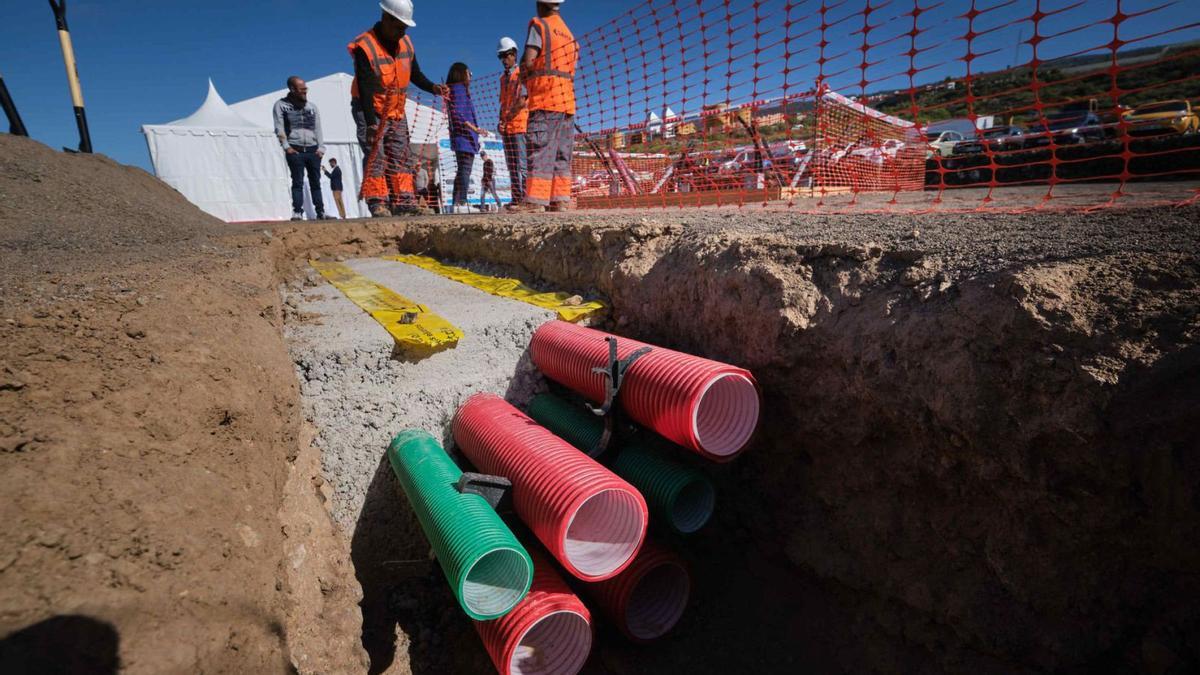
Archive image of a wiring in preparation for the Underwater Electric Connection between the Islands of Tenerife and La Gomera. | / Carsten W. Lauritsen
José Domingo Méndez
Santa Cruz de TenerifeAPR 3025 20:05
Tenerife is set to enhance its telecommunications infrastructure to mitigate blackouts similar to the one experienced this week on the Peninsula. This was revealed yesterday by the president of the Cabildo de Tenerife, Rosa Dávila, who announced an upcoming meeting with major telephone carriers to discuss the establishment of connection centres (nodes) in the Canary Islands, aiming to prevent disruptions like the one that affected the emergency services 112 for three hours last Monday.
Notably, yesterday morning, the Insular Corporation disbanded the Insular Emergency Plan of Tenerife (PEIN) after the restoration of telephone communications and the cessation of the basic supply alert that had necessitated the Territorial Civil Protection Plan, Platca.
Communication nodes
Rosa Dávila emphasised that she will convene meetings in the coming weeks to explore the feasibility of establishing communication nodes in the archipelago to avert system failures. She argued that the Canary Islands require a secure network since, despite having Canalink, the underwater cable linking the islands to Europe and Africa, it still relies on connection nodes located on the Peninsula.
Innovation councillor Juan José Martínez reaffirmed this information: «We have assessed the repercussions of the blackout experienced by the Peninsula. Communications and power supply have already been fully restored, but the incident highlighted the importance of having nodes for each of the service providers here in the Canary Islands.»
Martínez noted that “submarine cables link us to the rest of the world, particularly to the Peninsula.” He explained: «Most operators route their activities through Canalink, except Movistar, which connects via Telefónica’s cables. These cables link to technical centres on the Peninsula, which in turn connect to communication nodes ». He illustrated the design of this communication circuit model with the example that “every time we make a call, even to someone just 100 metres away, it has to go through an underwater cable to the node on the Peninsula and back again.”
Avoid losing communication
Martínez added: “If we had a node for each operator here, we could prevent at least losing telephone communication within the archipelago, both for voice and data.” Referring to Monday’s incident, he stated: “The submarine cables functioned as intended, but when the power supply to the nodes failed, communications across the Canary Islands were also disrupted.”
He noted: “With those nodes in place, while we might have lost communication with the Peninsula, we would have retained it within the Canary Islands.” To facilitate this, the Cabildo de Tenerife developed the Dalix, a Data Centre located at the iter, “which is equipped with the necessary infrastructure to accommodate the nodes for all operators servicing the islands.”
The councillor remarked: “It could be located there or in any other location deemed preferable by the operators.” The benefit of the iter is “that it is an installation already designed for such purposes with its own power supply.” In the event of network failures, “if there’s a blackout, we could maintain our communication through the Canary Islands nodes and, if necessary, through submarine cables to those on the Peninsula.”
Investment
This is the strategy that the president plans to present to the operators stationed in the Canary Islands. Martínez stressed that “this does not demand a significant investment from the operators; in the long run, it could even lead to savings as they would utilise fewer voice and data flows through submarine cables.”
Moreover, he added that «it would enhance the telecommunications autonomy of the Canary Islands. This is a goal that a territory like ours cannot compromise on and we continue to promote with the expansions of submarine cables leading to Canalink, even extending towards Africa, from which we initiated connections to Tarfaya ».
Martínez concluded: “Voice and data connectivity is essential as it defines an advanced territory in the 21st century, and it is a priority for Tenerife.”
















